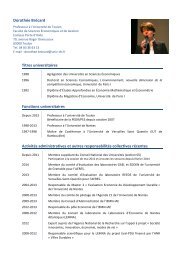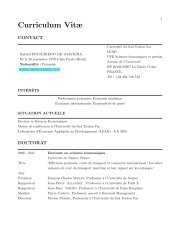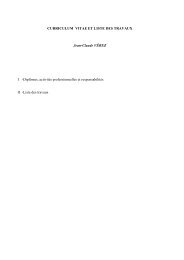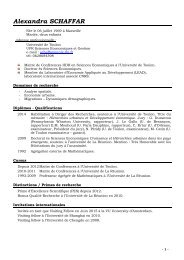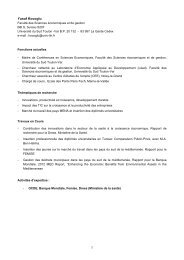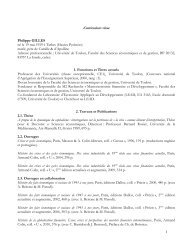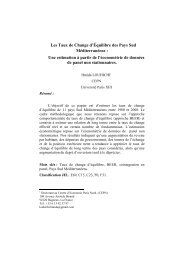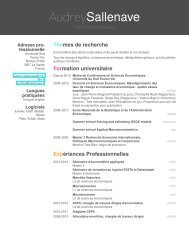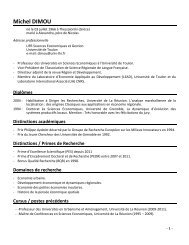The determinants of the number of banks: Empirical results ... - LEAD
The determinants of the number of banks: Empirical results ... - LEAD
The determinants of the number of banks: Empirical results ... - LEAD
Create successful ePaper yourself
Turn your PDF publications into a flip-book with our unique Google optimized e-Paper software.
firm establishes a relationship with one bank and earns a good reputation to initiatemultiple relationships later.Ongena and Smith (2000) present an overview <strong>of</strong> international studies on single versusmultiple banking relationships. Using a sample <strong>of</strong> 1079 large firms from 20 Europeancountries, <strong>the</strong>y find that more than 20% use eight or more <strong>banks</strong>, while less than 15%choose single bank relationship. Firms maintain more bank relationships in countries withinefficient judicial systems and poor enforcement <strong>of</strong> creditor rights.Finally, <strong>the</strong> <strong>number</strong> <strong>of</strong> <strong>banks</strong> can also be related to bank liquidity risk. This assumption isempirically validated by Detragiache and al. (2000) and Tirry (2007). Indeed, Detragiacheand al. (2000) show that in <strong>the</strong>ir sample <strong>of</strong> 1849 small and medium sized Italian firms, <strong>the</strong><strong>number</strong> <strong>of</strong> <strong>banks</strong> increase with firm size, leverage, and age <strong>of</strong> <strong>the</strong> firm. Firms with a lowerpr<strong>of</strong>itability choose single banking relationship. Bank fragility has a positive impact on<strong>the</strong> <strong>number</strong> <strong>of</strong> bank. Similarly, using a sample <strong>of</strong> Italian, Tirry (2007) finds that firmswhich are more likely to become rationed increase <strong>the</strong> <strong>number</strong> <strong>of</strong> <strong>banks</strong>.<strong>The</strong> extant knowledge on <strong>the</strong> relationship between bank and firms is rich but suffers froma lack <strong>of</strong> established empirical <strong>results</strong>. In fact, little evidence is provided in France due to<strong>the</strong> lack <strong>of</strong> specific data. Refait (2003) finds that <strong>the</strong> <strong>number</strong> <strong>of</strong> <strong>banks</strong> increase with <strong>the</strong>risk <strong>of</strong> <strong>the</strong> firm. Ziane (2003) suggests that firm‟s size, pr<strong>of</strong>itability and <strong>the</strong> degree <strong>of</strong>information opacity reduce <strong>the</strong> <strong>number</strong> <strong>of</strong> credit relationships.From <strong>the</strong> literature review, we formulate hypo<strong>the</strong>ses based on relations between Small andMedium Business and <strong>the</strong> <strong>number</strong> <strong>of</strong> bank lending relationships. We will test <strong>the</strong>m on <strong>the</strong>French data. To sum up, <strong>the</strong> different hypo<strong>the</strong>ses are:‣ H1:Most informational opaque firms should be characterized by a reduced<strong>number</strong> <strong>of</strong> <strong>banks</strong>.‣ H2: <strong>The</strong> <strong>number</strong> <strong>of</strong> <strong>banks</strong> increases with <strong>the</strong> duration <strong>of</strong> banking relationship.‣ H3: Firms rationed by his main bank are characterized by a high <strong>number</strong> <strong>of</strong> <strong>banks</strong>to satisfy <strong>the</strong> needed financing.






